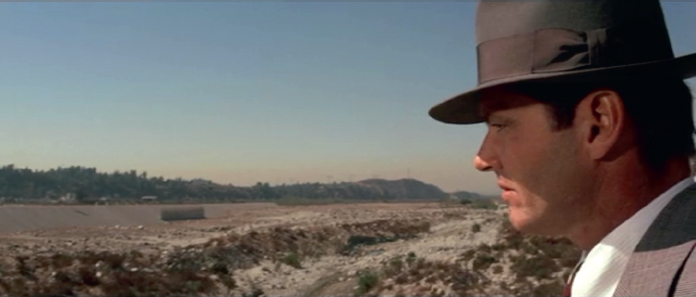Chapter 2: Introduction
Start with the Script
2
CHAPTER
“The hardest part of any story is to figure out the point of entry where your story begins.”
– Robert Towne, screenwriter of more than thirty-five films, including Chinatown (1974), The Firm (1993), and Mission: Impossible (1996)

Chinatown (1974)
KEY CONCEPTS
 Good movies start with good ideas, and there are many ways to discover good ideas.
Good movies start with good ideas, and there are many ways to discover good ideas. Theme, story, and character are the building blocks of film narratives.
Theme, story, and character are the building blocks of film narratives. When writing a screenplay, you need to follow a specific standard.
When writing a screenplay, you need to follow a specific standard. Revising your script many times is a normal and necessary part of the process.
Revising your script many times is a normal and necessary part of the process.
When Robert Towne began writing Chinatown, considered by many experts to be among the most finely structured screenplays of all time, he thought about the theme that would resonate in every scene. The story would be about Los Angeles’s history, water rights, corruption, and power. At first Towne considered writing a detective movie. However, as his creative process deepened, he realized that a detective movie wasn’t enough; he wanted to explore the theme of what crime really means. He would have his characters discover how land and community are destroyed as they encounter the disturbing, transgressive reality of modern cities springing into being.
He resolved to write a film far larger than a mere detective story, even though a detective would be its main character. Towne composed more than twenty outlines, each with thick, scene-by-scene descriptions. This gave him a view of most of the story. Then he scribbled one-sentence summaries of each scene on sheets of paper, so that he could cut them up and paste them on the door of the study where he and the director were working. They rearranged the scraps of paper over and over until they arrived at an order that worked. Towne then began crafting the scenes, fleshing out the characters and their actions through dialogue and dramatic moments.
Towne had turned down a lucrative studio job to write Chinatown; Paramount had offered him $175,000 to pen an adaptation of The Great Gatsby. Instead, Towne chose his passion project and grappled with the script for 10 months. He was rewarded when Chinatown won the Academy Award for Best Original Screenplay.
Towne’s experience in writing Chinatown is a model for writing any film, big or small: build your idea; decide on your themes and characters; organize the structure; and work, work, work. The written word is the first road map for all successful movies, from 2-minute classroom projects to 15-minute thesis films, from 30-second commercials to epic-length features. Even documentaries begin with a written description of their subject matter. Completely visual films, including silent and animated movies, also begin with words.
Words are a way of describing your vision for the project, and they help make sure you and your collaborators are literally on the same page. Words are also the most cost effective way to test your storytelling and visual ideas, because it is always better to test your filmic imagination in a document, to make sure it is what you want and communicates that vision to others, before you start spending time and resources actively producing the movie.
In this chapter, you’ll explore where stories come from, how to imagine characters, and the formats that work best to convey your ideas for the screen. You’ll also discover the way scripts are refined until they are ready to be shot, a process that’s called development. You’ll learn how to do all this for your class project, which resembles the way many smaller, independent films are made, and also how writing operates in larger studio movies. No matter what scale you are working at, whether in school or on a Hollywood lot, good writing starts with a character the audience can identify with. As you begin, a blank canvas awaits your imagination; you are about to describe the movie you want to make. The suspense builds, and you ask yourself, What will happen next?